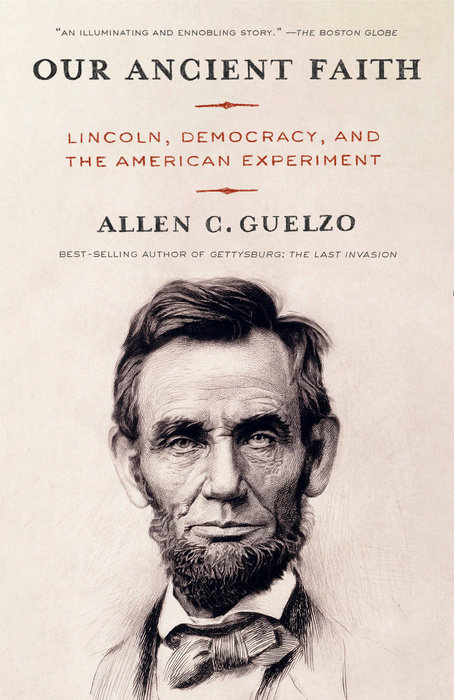William Howard Russell, The Times of London’s reporter in America in 1861, was startled to find that at Lincoln’s White House receptions “any one could walk in who chose.” Even the hat he wore en route to Washington and his inauguration sent a democratic message: it was a “soft wool hat” with a wide brim and tall crown, known as a “Kossuth hat,” from the style worn by the Hungarian revolutionary, Lajos Kossuth.
Lincoln did not, however, offer a specific, or even lengthy, definition of democracy, or “representative” democracy, or “a representative Republic,” or a “constitutional republic, or “a democracy—a government of the people, by the same people.” A republic was clearly a democratic space, since its opposite was the suppression of “meetings,” and through that, “to shut men’s mouths,” and he had no hesitation in jumbling together republic and democracy as though they were synonyms. But Lincoln’s only attempt at actually defining democracy occurred, almost in passing, in a note he jotted on the eve of the Lincoln-Douglas debates, and at that moment, it was more of an effort to set democracy apart from slavery:
As I would not be a slave, so I would not be a master. This expresses my idea of democracy. Whatever differs from this, to the extent of the difference, is no democracy.
This is a peculiar definition, since Lincoln makes no formal attempt in it at specifying the components of democracy (like the location of sovereignty), and makes no allusion to elections, or even to majority rule. What Lincoln did instead was to draw a contrast between slavery and democracy, so as to illustrate what democracy was not, and that contrast hinged on the point of consent. A slave is someone who has no autonomy, no say in their status, whose consent is unsolicited and undesired, and with no prospect of being delivered from that status.
Consent was a key concept for Lincoln in considering both democracy and slavery. Consent was how sovereignty was exercised: his objection, in 1848, to war with Mexico over the disputed region between the Nueces River and the Rio Grande was based on whether the people in that region had ever “submitted themselves to the government or laws of Texas, or of the United States, by consent.” And consent was what drew a line of separation between freedom and enslavement. “This is a world of compensations,” Lincoln concluded, “and he who would be no slave, must consent to have no slave.”
